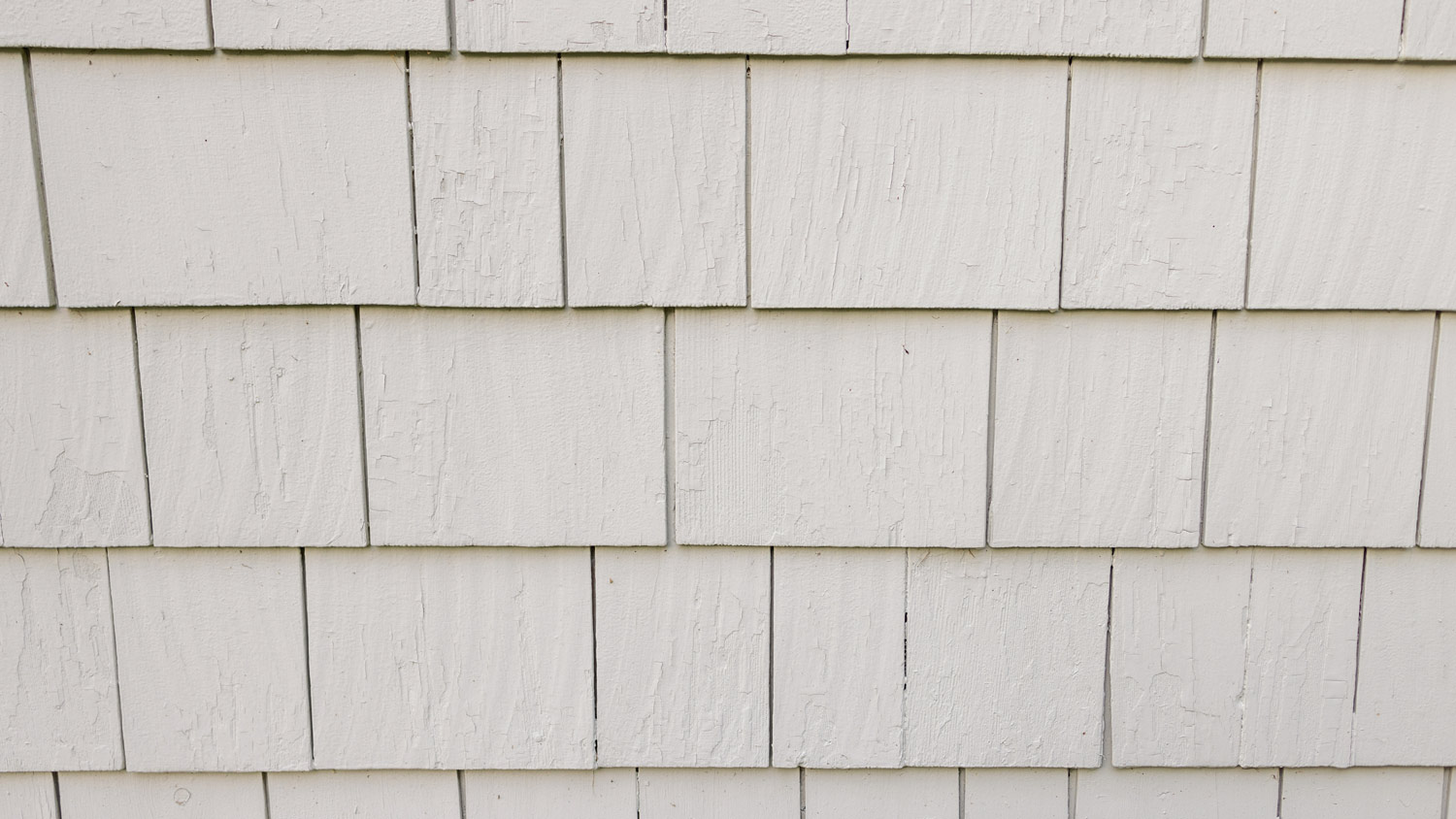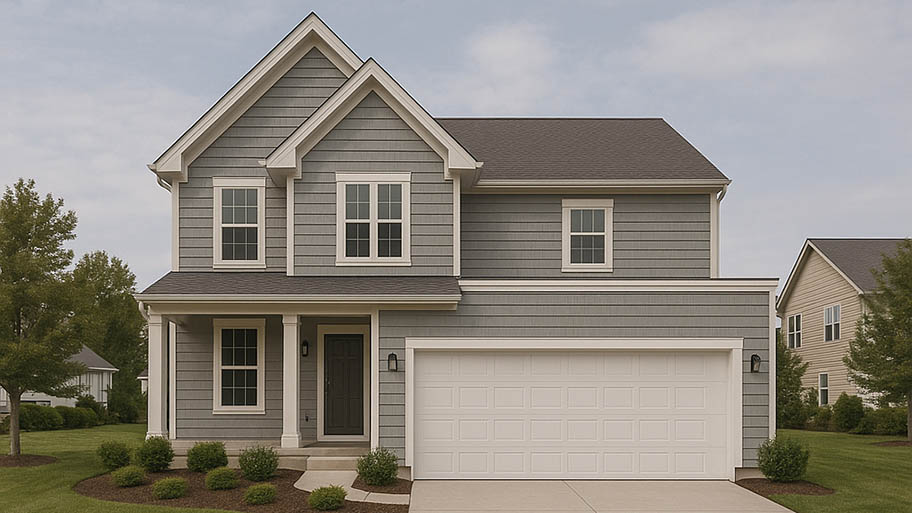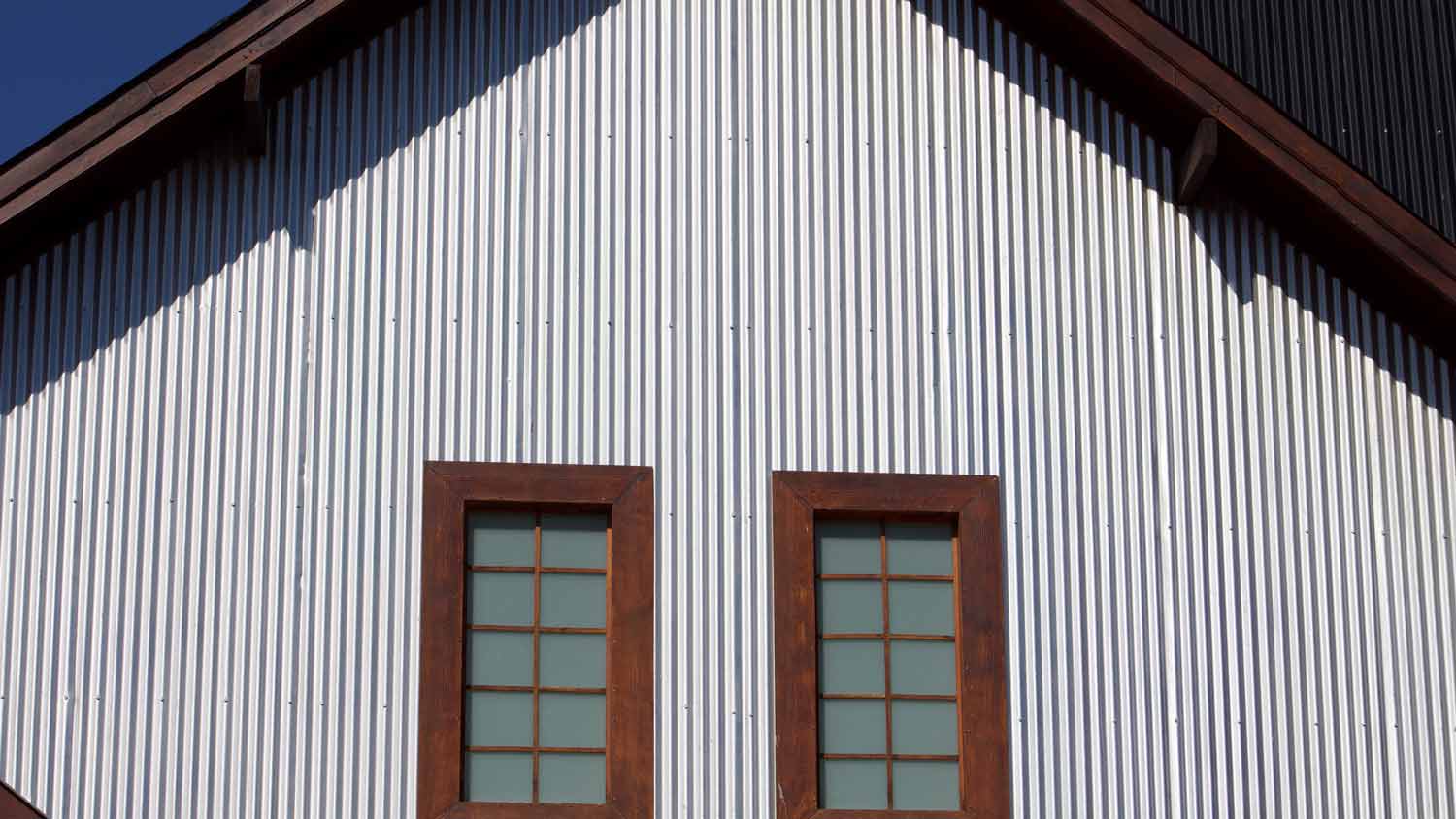
Love the rustic look of log cabins but want a more durable siding? Use this vinyl log siding cost guide to see if this is a good alternative for your home.
If you’re “board” with traditional siding, this option may be your best bet


Hardie board siding is made of fiber cement, which is a mixture of sand, cellulose fibers, and cement.
Pros of Hardie board siding include its durability, low maintenance, customization, and eco-friendliness.
Cons of Hardie board are its high upfront cost, the fact that it requires professional installation, may require repainting, and takes longer to install.
Hardie board siding costs range from $5,000 to $37,500.
Hardie board siding is a home exterior option that can withstand harsh weather, from torrential downpours to hail, sleet, and snow. However, it comes at a higher cost due to its long lifespan and more durable material. Let’s dig into Hardie board siding’s pros and cons to help you decide if it’s the right siding for your home.
Hardie board siding is a durable product made from the brand James Hardie. It consists of a mixture of cement, sand, and cellulose fibers which help it protect your home from pests, moisture, and harsh weather conditions. Hardie Board siding can last anywhere from 30 to 50 years, depending on how well it’s maintained.
| Hardie Board Siding Pros | Hardie Board Siding Cons |
|---|---|
| Durable | High upfront cost |
| Customizable | Requires professional installation |
| Sustainable | May require repainting |
| Low maintenance | Longer installation process |

An alternative to wood or vinyl siding, Hardie board siding is a highly customizable material that can withstand even the strongest of storms. Whether you live in a region that is exposed to harsh conditions or prone to pests, Hardie boards can withstand a multitude of variables thanks to its durability. Although durability is its top benefit, it has several others that make it an excellent siding option for your home.
Wind or snow or rain or hail is not likely to damage Hardie board siding, since it’s resistant to cracking, warping, or rotting. Because it is moisture-resistant, it can sustain harsh conditions for years without being compromised.
This type of siding comes in a variety of colors, styles, textures, and thickness, making it an optimal choice for a wide range of aesthetics. Want a more rustic look? You can choose a wood-grain Hardie board style, or if modern is your preference, you can opt for vertical panels instead of shingles or lap siding.
Made from raw materials like cement, cellulose, and sand, Hardie board siding depletes less resources in its creation as opposed to other materials like vinyl. Plus, it provides better insulation than metal and vinyl, so it’s more energy efficient. This can help you use less heating and air conditioning and lower your carbon footprint.
Because of its high durability, this specific type of siding doesn’t need regular maintenance like other materials. Since it won’t rot or crack, you won’t need to replace boards or repaint as often as other siding like wood requires. The most you’ll need to do is have your Hardie board siding cleaned and painted every 10 to 15 years.
While the pros of Hardie board siding are plentiful, there are some cons to consider when choosing this material for your home. Read on for more cons to help you decide if Hardie board is the right fit for you.
Depending on where you live and how much siding you need, the cost of Hardie board siding ranges from $5,000 to $37,500. Most Hardie boards cost about $5 to $15 per square foot, with more basic colors and styles falling on the lower end and more customized options falling on the higher end. If you’re on a tight budget or looking for a lower-cost siding option, Hardie board may not be the right material for you.
We don’t recommend DIY installation with this type of siding. This material is best installed by a licensed professional, so you’ll need to hire a local siding contractor. They’ll know the specific requirements of the siding and have the tools and equipment necessary to do the job right. Although paying for labor may cut into your bottom line, it’s best to go with the experts for this project.
As durable as Hardie board siding is, it still may need a paint touch-up every decade or so, especially if you live in a region that is tough on outdoor siding. Depending on how customizable the color of your siding is, you may have to have the paint color matched by a professional so you don’t have visible touch-ups.
Since Hardie board is made from fiber cement, its material is heavier and denser than other siding options like vinyl or wood. This makes it more physically demanding to handle, carry, and cut during installation, which can slow down the process. Unlike lightweight vinyl, which can be easily snapped into place, Hardie boards require more precision and often specialized tools.
If you’re considering alternatives to Hardie board siding, you’ll likely run into one of the following siding options:
From average costs to expert advice, get all the answers you need to get your job done.

Love the rustic look of log cabins but want a more durable siding? Use this vinyl log siding cost guide to see if this is a good alternative for your home.

Learn about the average siding repair cost to expect based on siding type, repair type, and extra labor when getting estimates to fix siding from contractors.

Insulated vinyl siding costs are about double traditional vinyl siding—but the energy savings are more than worth the investment. Learn more in our guide.

Determining how much EIFS costs per square foot is the key to predicting your bottom line when replacing or installing this long-lasting home cladding option.

From clapboard to shiplap, there are tons of wood siding types for you to choose from. Here’s a run-down of the ten most popular types of wood siding.

Discover who to hire for metal siding installation and who to hire to install metal siding. See how the pros work, and get started today.